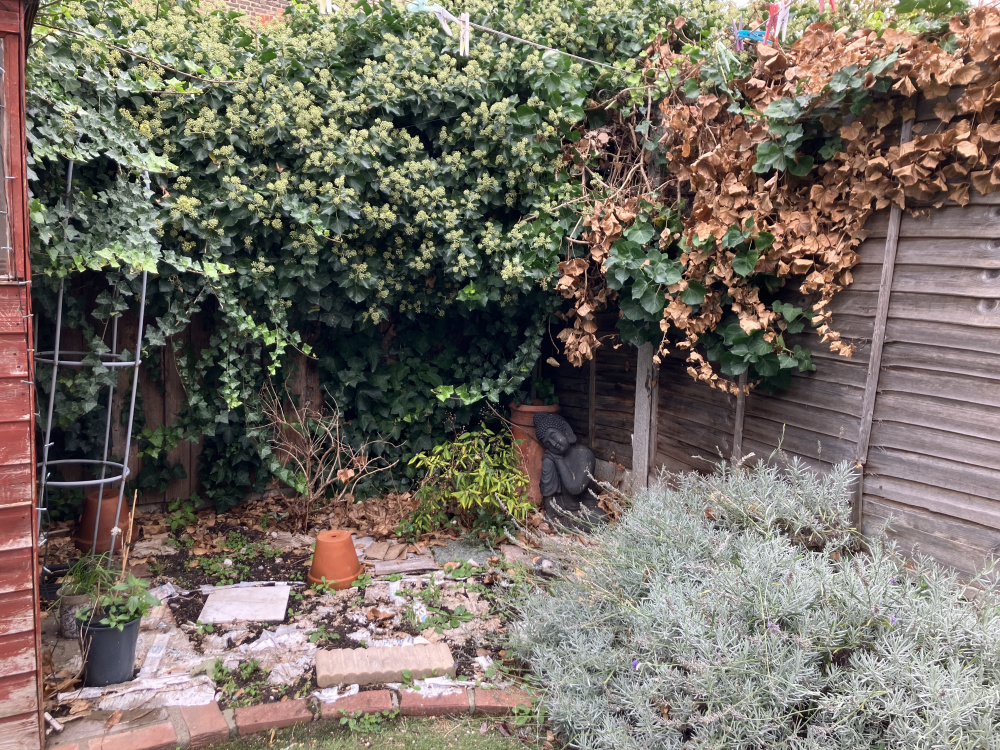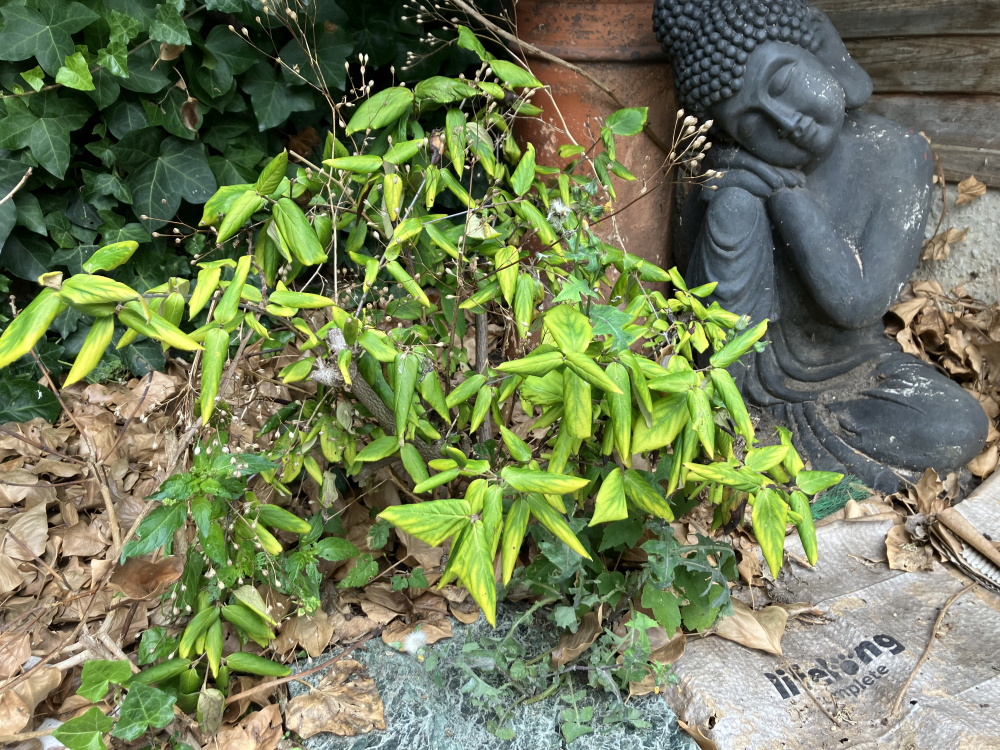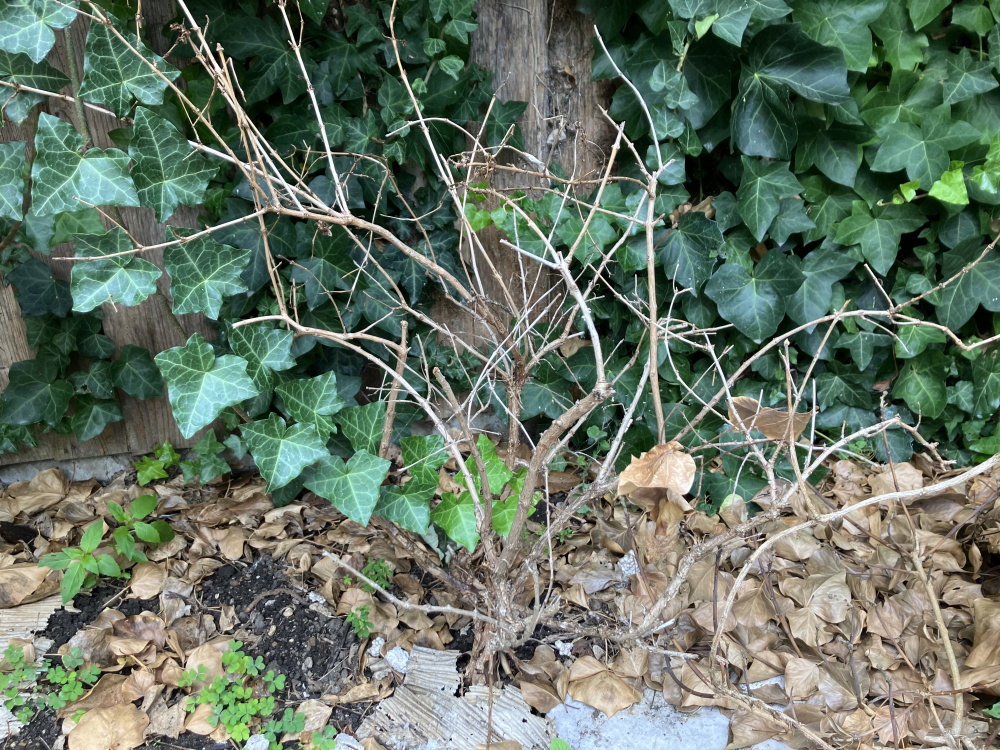This Forum will close on Wednesday 27 March, 2024. Please refer to the announcement on the Discussions page for further detail.
Plants dying near ivy fence
I’m new and looking for some advice on what to do with a small south facing patch of garden (see photos).
Nothing seems to grow here, apart from weeds and a lavender bush (which gets bigger every year and always flowers). I tried planting a viburnum and fuchsia - the viburnum seemed okay in spring but then the leaves turned yellowish and shrivelled up, and the fuchsia just died! I’ve sowed various annual flower seeds but they never grow either.
The fence by this area is covered with ivy. I like it and I’m quite happy to keep it but I’m wondering if that’s what is causing the problem by taking all the nutrients and water from the soil. I don’t want to waste any more money on plants that will just die, so what can I do with this area? I’m happy to plant anything really, as long as it’s safe for cats and ideally wildlife friendly.
Any help is much appreciated!



Nothing seems to grow here, apart from weeds and a lavender bush (which gets bigger every year and always flowers). I tried planting a viburnum and fuchsia - the viburnum seemed okay in spring but then the leaves turned yellowish and shrivelled up, and the fuchsia just died! I’ve sowed various annual flower seeds but they never grow either.
The fence by this area is covered with ivy. I like it and I’m quite happy to keep it but I’m wondering if that’s what is causing the problem by taking all the nutrients and water from the soil. I don’t want to waste any more money on plants that will just die, so what can I do with this area? I’m happy to plant anything really, as long as it’s safe for cats and ideally wildlife friendly.
Any help is much appreciated!



0
Posts
The fact that it is growing on a fence is a concern, Ivy growth is too strong for a 6ft fence panel and I have seen rotten fences held together with Ivy.
In early spring before nesting you could cut it back really hard, a mess for a while but it will soon get going with some water. It won't flower next Autumn.
If your fence panel needs replacing you could consider a new start with a more suitable climber but not sure you will find an evergreen
Depending on where you live an your type of soil you may be able to try some more exotic plants. An opportunity for a project maybe.
Just to add the roots of the Ivy will grow less slowly if you give a hard cutback. However you will still have issues when planting as it is likely that an Ivy of that size has a fairly big root run.
Gardening in Central Norfolk on improved gritty moraine over chalk ... free-draining.
The fence is very old and I’m pretty sure the ivy is the only thing holding it up! We do normally cut it back but we’ve missed a couple of years, which is why it’s got so big.
I’m not sure I can face trying to get rid of the ivy, or replacing the fence (unless it falls down, in which case the decision will be made!).
I suppose what I’m really looking for is plants that can cope with growing near the ivy, if such a thing exists! The lavender seems pretty happy but that’s not right next to the ivy, which might be why it’s okay.
If all else fails, I will put down a weed membrane, gravel the area and grow in containers instead. Just wanted to check whether there is another solution first.
That is why you are having problems all new plants like a good soil and root run. Did you have problems planting your Viburnum and Fuchsia.
Your Lavenders are 4 /5 years old? They have had time to settle and mature and may not have had the same competition, they are further out and the Ivy may have had a smaller root run when you originally planted them.
Financially pots could be expensive unless you have some, plus membrane/gravel.You do have a lovely obelisk which you could just place as part of the 'look'' it doesn't need something to grow up it necessarily.
If the fence gives up that could also be costly too, so it all needs some thought I think.
I hope you find something that means you can enjoy this little sun trap even on a sunny winters day.
It's pointless trying to plant into unsuitable sites, so it's always about improving the soil you have [so that it either drains better or holds onto moisture more] and then picking plants which can thrive in your climate and conditions. Viburnums and fuchsias wouldn't be happy in a south facing, dry site, underneath all that top growth, as they need decent moisture levels.
Anything you do plant will need well watered until established too, regardless of what it's ideal conditions are.
If you plant further forward from the ivy [cut it back hard first ] that will also help. Euphorbias and hardy geraniums will be fine, and so will many bulbs. Sedum spectabile [now called Hylotelephium] will also be fine there. Asters too. Anything that enjoys the site will also spread.
This is a good time of year to renovate the area and get plenty of compost/manure etc down on it, ready to plant in spring. If you keep mulching regularly after thorough watering, the soil will be in much better condition for new plants
I live in west central Scotland - not where that photo is...
Gardening in Central Norfolk on improved gritty moraine over chalk ... free-draining.